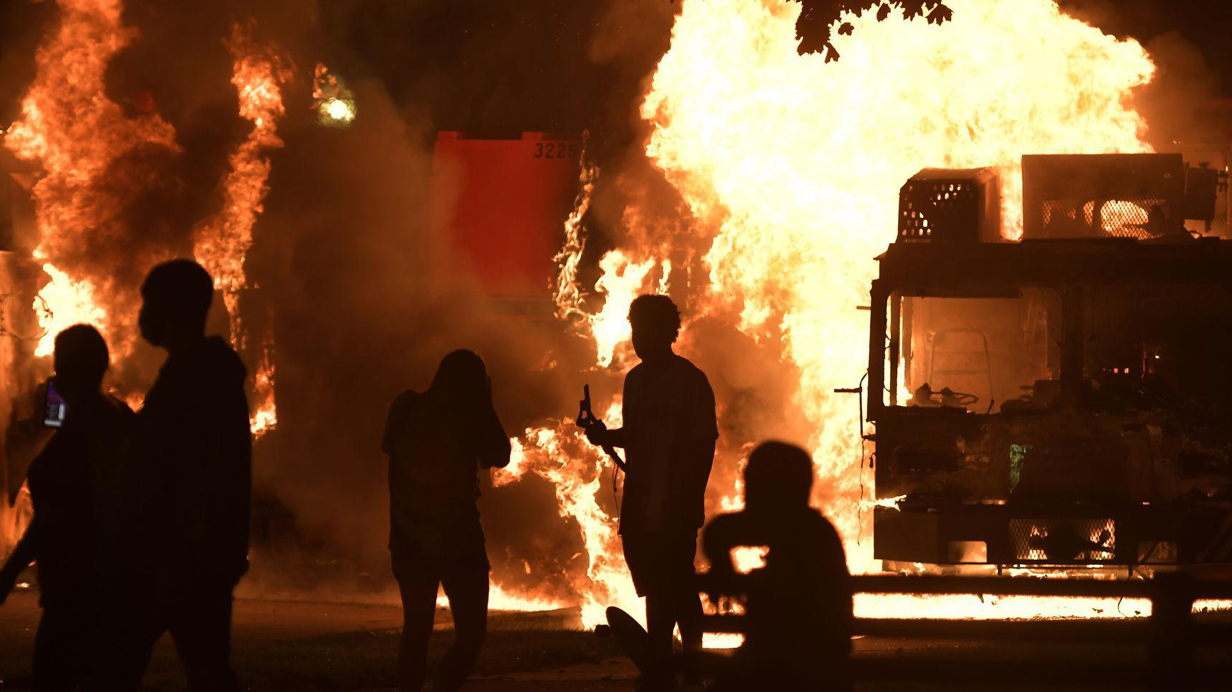
Democrats across the country are furious with Kyle Rittenhouse, who appears on the precipice of acquittal. As Dan O’Donnell points out, they should really be mad at Kenosha’s mayor and Wisconsin’s Governor, whose refusal to restore order in the city led to the tragic shootings.
November 12, 2021
Perspective by Dan O’Donnell
With his eyes clenched tightly shut as his entire body heaved with sobs, Kyle Rittenhouse looked far less like a merciless killer than a terrified child. The moment he broke down while testifying in his own defense on Wednesday was the moment the world (if it hadn’t already) took notice of his case.
The Illinois teenager, just 17 years old when he arrived in Kenosha last summer during the third night of rioting, faces intentional homicide, reckless homicide, attempted homicide, recklessly endangering safety, and illegal firearm possession after he shot and killed two men and injured a third as he patrolled the streets armed with his semi-automatic rifle.
While his defense has presented an airtight case that Rittenhouse acted in lawful self-defense—demonstrating that one man he shot was lunging for his gun, another was beating him with a skateboard, and the third was pointing a handgun at him—perceptions of the case largely fall along ideological lines: Liberals view him as a homicidal sociopath and conservatives view him as something between a scared kid and Second Amendment martyr.
If anyone in America still didn’t know how they saw Rittenhouse, the moment he became too emotional to continue his testimony was the moment they likely decided. These were either crocodile tears or genuine and overpowering emotions. Each sob and shudder produced ever more analysis, but in the endless hours of news coverage, there hasn’t been a moment’s thought as to why Rittenhouse was in Kenosha in the first place.
Whether he was a misguided kid or bloodthirsty vigilante is subject to political interpretation, but a concrete fact is that Rittenhouse stepped into the vacuum of lawlessness with the intent of restoring order, and he did so only because Kenosha’s mayor and Wisconsin’s governor refused to.
Instead, they allowed a volatile situation to explode into chaos and, in Evers’ case, even helped to incite rioting through inflammatory statements about the Jacob Blake shooting in the press. At almost the exact moment protesters were told to gather in Kenosha the night Blake was shot, Evers said in a news release that “while we do not have all of the details yet, what we know for certain is that he is not the first Black man or person to have been shot or injured or mercilessly killed at the hands of individuals in law enforcement in our state or our country.”
Kenosha burned that night, in part because Kenosha Mayor John Antaramian—like most Democrat mayors in cities beset by rioting last summer—refused to allow law enforcement officers to engage in aggressive crowd control measures that might have stopped the anarchy before it started.
As the city lay in smoldering ruins the following morning, Evers refused to deploy the National Guard even though it was obvious rioters would return that night. The Kenosha Police Department and Kenosha County Sheriff’s Department requested the deployment of 750 troops, but only after hours of begging from Kenosha residents and very public criticism from legislative Republicans did Evers send in the Guard…and just 125 troops.
Unsurprisingly, Kenosha burned for a second straight night. Across Wisconsin and the country, people watched in disbelief. Why were neither local nor state officials stopping the madness? And in Antioch, Illinois, a 17-year-old decided that if professional law enforcement and military personnel wouldn’t be allowed to protect Kenosha, he would.
As Rittenhouse drove up to Kenosha, Evers authorized the deployment of additional 125 National Guard troops to bring the total to 250; still far below the 750 that local law enforcement had requested. President Trump’s White House offered to deploy 500 federal troops to make up the difference, but Evers refused.
The National Guard troops who were deployed were vastly outnumbered by a mob that descended upon the city for a third straight night. This time, however, Rittenhouse was mixed in with them.
Had either Antaramian or Evers acted more quickly and allowed law enforcement and the National Guard to act instead of sitting passively on the sidelines as rioters destroyed Kenosha for two nights straight, Rittenhouse almost certainly would not have felt the need to take matters into his own hands.
Whether he shot three men in self-defense is a matter for a jury to decide, but history has already judged the failure to protect Kenosha as a major reason both vigilantes and scared kids alike descended on the city to either sack it or protect it.
Lawlessness begets lawlessness, and in a very real sense, it was lawlessness that killed two men and injured another that night. They were part of the mob, and the evidence presented at trial shows they attacked Rittenhouse and tried to disarm him. All of them—those who were shot, Rittenhouse, and everyone else on the streets of Kenosha that night—were there because of the absence of control and the abdication of leadership from the men tasked with keeping Kenosha and Wisconsin safe.
Their failure created a vacuum of chaos that made a deadly confrontation all but inevitable. Whether that confrontation amounted to murder or lawful self-defense is still an open question in a court of law, but in the court of public opinion, Antaramian and Evers deserve to bear responsibility for their utter refusal to keep their citizens safe.
